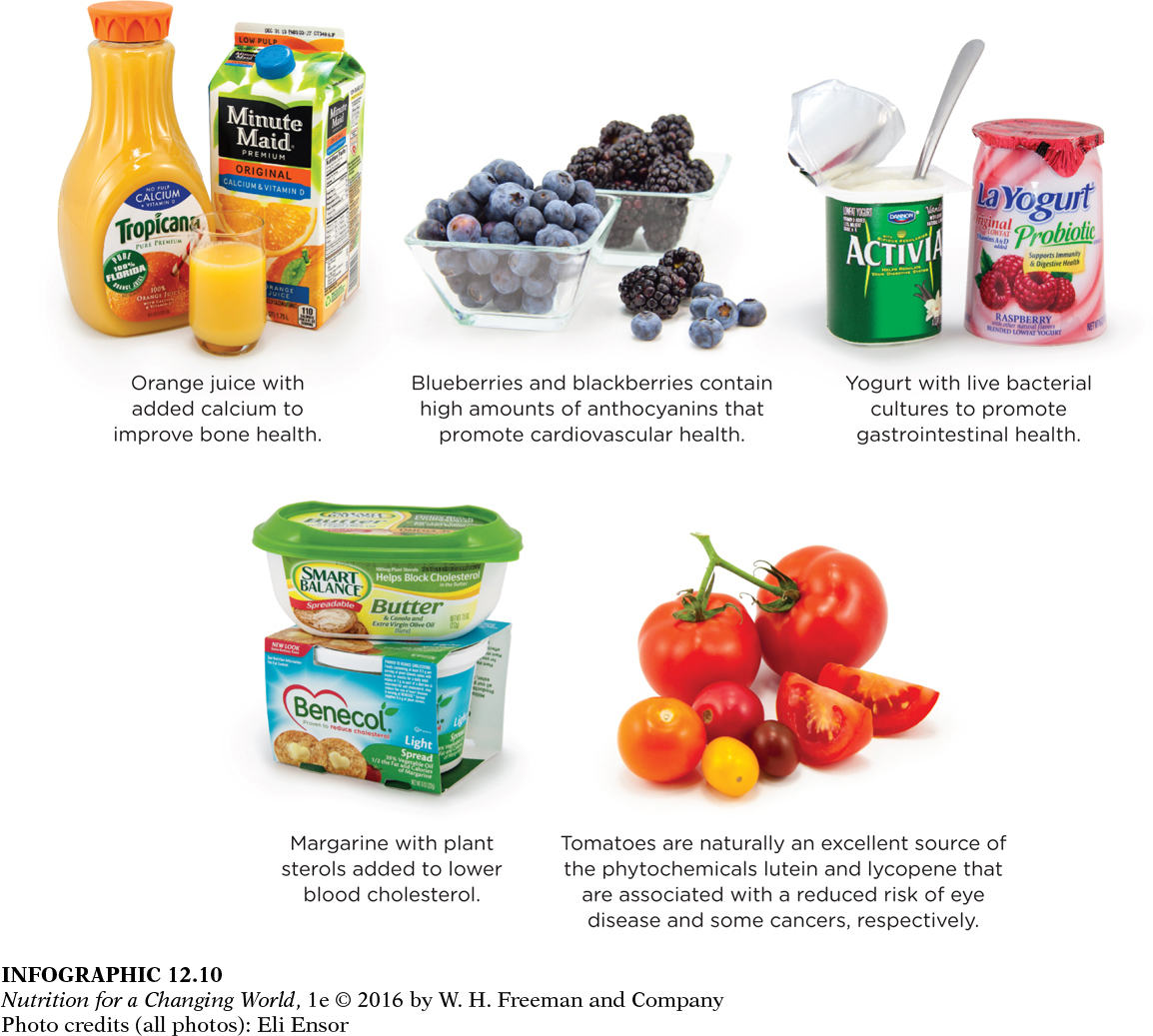FUNCTIONAL FOODS
FUNCTIONAL FOOD a food that provides additional health benefits beyond basic nutrition that may reduce disease risk or promote good health
Food manufacturers may opt to add additional nutrients to food products to boost nutritional value and potential health benefits. These products fall under a class of foods called functional foods (also called nutraceuticals). Functional foods contain nutrients or other constituents, such as phytochemicals, that may enhance their contribution to health and disease prevention beyond their basic nutritional content. Functional foods may be whole foods or processed foods that have been touted to decrease the risk of cancer, heart disease, diabetes, or obesity, or to slow the aging process. Some of these claims may be overhyped, but some may be accurate.


Functional foods include whole foods, like vegetables, berries, and fish; enriched grains; fortified juices and milks; and enhanced foods, such as sports bars and sports drinks designed to help you run longer or play sports harder. Sports supplements, known as ergogenic aids, are discussed in detail in Chapter 16.
275
The Academy of Nutrition and Dietetics noted, in its 2013 position statement on functional foods, that “all food is essentially functional at some level as it provides energy and nutrients needed to sustain life. However, there is growing evidence that some food components, not considered nutrients in the traditional sense, may provide positive health benefits.” (INFOGRAPHIC 12.10)

Question 12.8
 Why is the orange juice pictured here considered a functional food?
Why is the orange juice pictured here considered a functional food?
The orange juice pictured is considered a functional food because it is fortified with calcium.
Nutrient-
276

Question 12.9
 What types of grain products are most likely to have prebiotic properties?
What types of grain products are most likely to have prebiotic properties?
Oats, wheat, barley, and rye have prebiotic properties.
The United States currently has no statutory legal definition for functional foods, nor any specific regulatory policies for them, so they can be categorized as conventional foods, dietary supplements, or medical foods. Functional foods are common, representing the largest percent of new food products introduced to the market over the past decade. Many packaged functional foods include health claims on their labels that are regulated by the FDA, and most are high in nutrients in relation to calories, so they can contribute to dietary quality, optimal health, and disease prevention when consumed as part of a varied, balanced diet and healthy lifestyle.